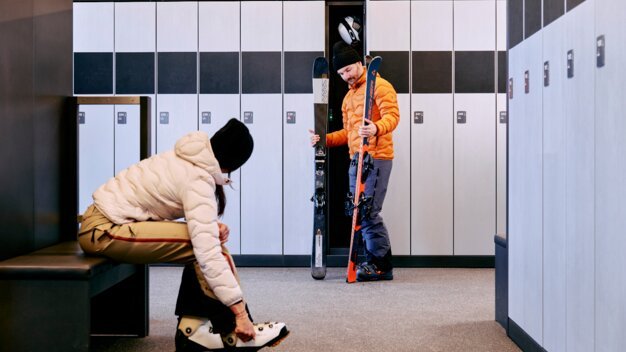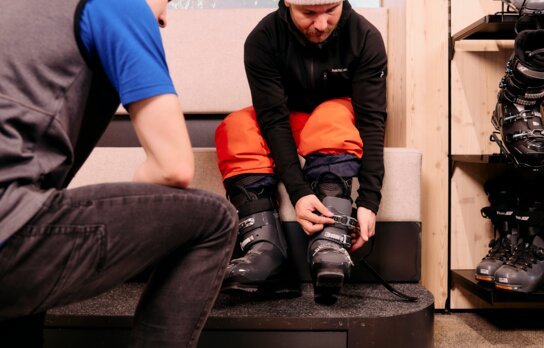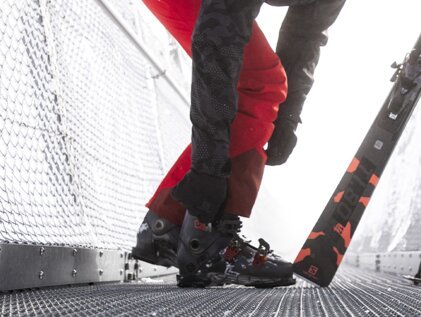
Ensuring the correct size of ski boots is crucial. But why exactly is the ‘sole length’ important, and what is ‘canting’?
Let’s explore these and other relevant questions! Keep reading to deepen your understanding of ski footwear for winter sports!
Understanding ski boot sole length
The sole length of ski boots is an often overlooked aspect, likely because it doesn’t play a significant role when choosing the size. However, its importance becomes evident when setting the bindings.
Key insights about sole length
- It isn’t a standardised measurement.
- It varies depending on the manufacturer, meaning it can’t be directly inferred from the boot size.
- Ski boot sole lengths can span multiple sizes.
Our RENTertainers recommend
Check the manufacturers’ size charts! You’ll notice that for each boot size, there are models with varying sole lengths.
Why does sole length matter?
The sole length is important when adjusting your bindings. The objective is to align the ski boot’s centre marking perfectly with the mounting point to facilitate a balanced skiing experience.
To optimise the connection between the ski binding and boot, it’s best to purchase them both at the same time. Please be aware that some binding systems offer limited adjustability, and lightweight touring bindings may not have any adjustment range at all.
How to determine the exact sole length of ski boots
The exact sole length of ski boots is usually indicated as a three-digit millimetre measurement in the heel area of the boot. This figure’s visibility varies by manufacturer and can be more or less prominent.
If you have older ski boots or second-hand ones, the measurement might not be visible at all anymore. In such cases, you can take a tape measure and measure yourself.
Measure the distance from the very front edge at the tip of the boot to the outermost edge of the sole at the heel. Consider any wear or rounding of the edges in your measurement.
Accuracy is key: For a perfect fit of your ski boots in the bindings, the sole length must be precise – to the millimetre!
Choosing the right size for your ski boots
As mentioned earlier, the sole length of ski boots isn’t indicative of their size. When purchasing boots, your primary focus should be on the interior dimensions. A general rule is to opt for a slightly smaller boot rather than a larger one. Why? The internal padding gives way over time and can alter the fit by up to half a size.
Need a detailed guide for selecting the right size?
Our blog article on the ideal ski boot size and fit offers comprehensive insights into what you should consider when making your purchase.
What is canting in ski boots?
Canting in ski boots is a term you might have come across before. It refers to the angle between the boot’s shell and the leg part. Adjusting the boot’s outer shell alters the canting, which can help to eliminate pain experienced while wearing or skiing.
Discomfort in the boot often arises after injuries like a shin fracture or due to conditions such as knock knees or bow legs. Adjusting the canting realigns your stance in the boots to a flatter, straighter position, boosting control and comfort while skiing.
The canting angle can be modified by adjusting the canting screw on the ski boot. However, it’s advisable to leave this adjustment to professionals, as incorrect settings can worsen the discomfort and therefore your skiing experience.
The bottom line
If you experience pain that’s related to your ski boot, be sure to check the canting – especially, if you know that you’ve picked the right boot size.
Top winter sports equipment at INTERSPORT Rent
Do you want to stay flexible and always wear the latest gear for all your slope adventures? Take advantage of the convenient rental options available at INTERSPORT Rent. With over 800 locations in 14 countries, we’re always right where you are!





